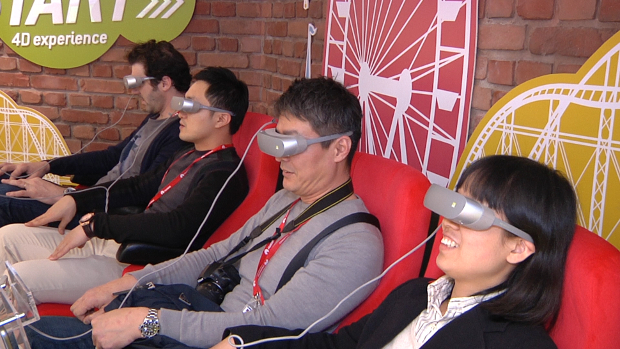Virtual reality headsets are getting a lot of buzz, but programs and content are tough to find. You can now test your skill at writing VR apps with a software development kit (SDK) released by ARM.
VR apps written using ARM’s Mali VR SDK version 0.2, now effectively in beta, can be viewed on headsets like Samsung’s Gear VR. The SDK is designed to work with ARM’s Mali graphics processor, which is found on many top-line smartphones like the Galaxy S7 and S7 Edge, announced this week at Mobile World Congress.
Virtual reality is a hot topic at the show, going on in Barcelona. Research firm Gartner is projecting VR headset shipments to reach 1.4 million this year, up from just 140,000 in 2015, and rising to 6.3 million by 2017.
Facebook CEO Mark Zuckerberg at MWC said VR is the next big social platform through which users will be able to share new social experiences. HP believes VR could change the computing experience and is looking to bring interactive 3D features to Windows laptops and Chromebooks, desktops and tablets.
Large companies like Samsung and boutiques like Two Bit Circus are driving the development of VR content. Games are also being written to work on the upcoming Oculus Rift headset.
Writing VR applications for 3D is very different than writing programs for flat screens and keyboards and mice, said Brian Blau, research director at Gartner.
The VR headset has a completely new interactive interface, and new skills are needed to write content and programs, Blau said.
Material that doesn’t hurt the eye or cause nausea needs to be created, Blau said.
“There’s going to be a lot of good apps out there, but I’m sure there will be many bad ones too,” he said.
Writing VR applications isn’t just about writing code, but also requires an understanding of human-computer interaction, especially as content becomes more immersive.
The Mali VR software development kit has sample programs on content delivery and eye tracking that are key to VR experiences. Programmers don’t want to give users the feeling that objects in a 3D world are poking them in the eyes. Some VR headsets like Microsoft’s Hololens have sensors to track eye movement.
The SDK will also ultimately cover tracking a viewer’s head orientation and reducing latency when showing content, according to documentation on ARM’s website.
The SDK works with OpenGL API, but not with its successor, Vulkan 1.0, which was released last week. Vulkan does a better job at rendering high-quality VR content in a more power-efficient manner. ARM’s new Mali GPUs support Vulcan.
IDG News Service







Subscribers 0
Fans 0
Followers 0
Followers